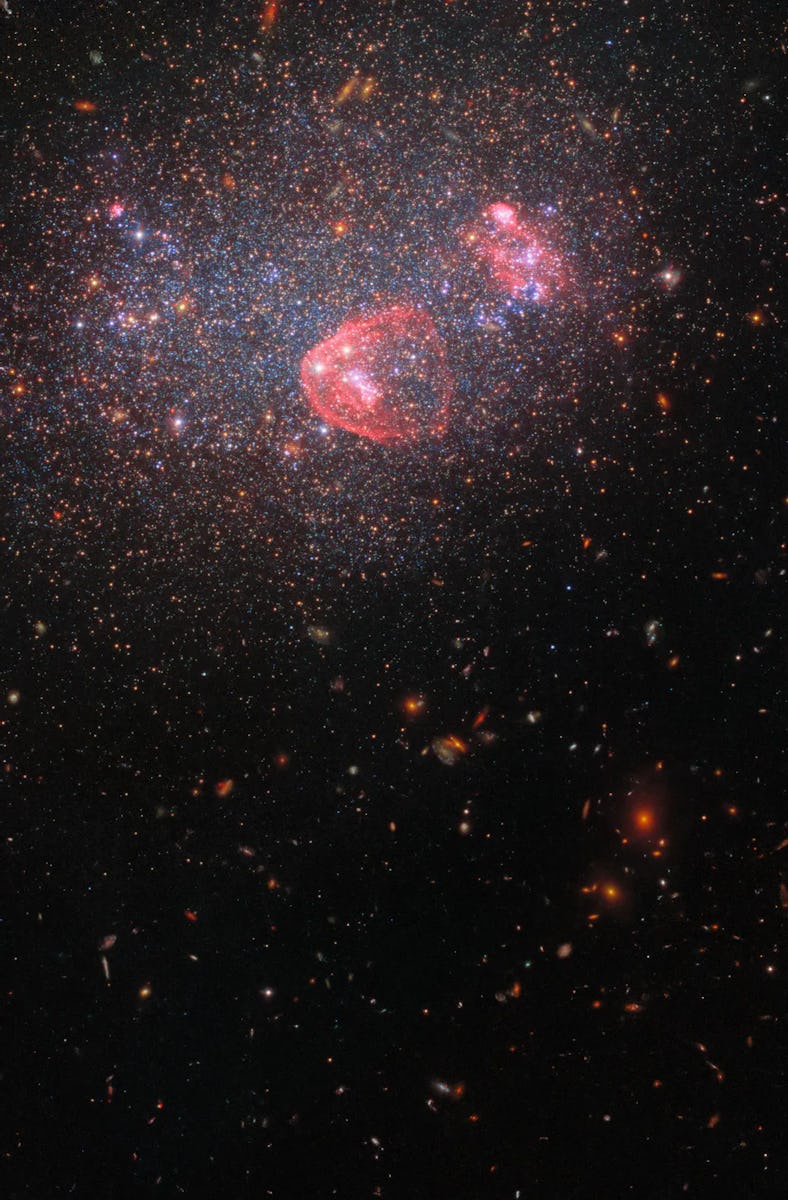This Hubble Image of a ‘Cosmic Snow Globe’ Took 15 Years To Complete
The latest Hubble Space Telescope image of dwarf galaxy UGC 8901 highlights its messy, chaotic nature.

Dwarf galaxy UGC 8901 seems to have perfectly captured the spirit of the last week of the year: disheveled and stuck in between milestones, but still super sparkly.
UGC 8901 is what astronomers call an irregular galaxy, one that is definitely not a smooth ellipse or an intricate spiral, but rather a messy jumble of stars and glowing gas, just doing its best. I mean, aren’t we all? And, not entirely unlike humans, some irregular galaxies are messy because of difficult interactions with other galaxies, while others are just dealing with some stuff of their own (like huge outbursts of star formation). Astronomers aren’t sure what UGC 8901’s backstory is, so we’re all free to see a bit of ourselves in its disorganized tangle of stars.
UGC 8901 is a festive mess, and we love it.
Never Stop Sparkling
The latest Hubble image of UGC 8901 is actually a compilation of 15 years of Hubble data, captured with the venerable space telescope’s Wide Field Camera 3 and Advanced Camera for Surveys. Interstellar hydrogen, glowing with the light of hot, relatively young stars, shows up as blobby red clouds, while older stars sparkle brightly around and through them. Distant galaxies offer a glittering backdrop.
Astronomers are interested in dwarf galaxies like UGC 8901 because small, disorganized galaxies like this one may have played an important role in reheating scattered wisps of hydrogen gas in the space between galaxies, which cooled as the universe expanded in the wake of the Big Bang. Heating that hydrogen gas was essential for the evolution of the universe we see around us.
Understanding dwarf galaxies can also help reconstruct how messy little galaxies like UGC 8901 eventually grew and evolved into huge, elaborate spiral structures like our Milky Way or the nearby Andromeda Galaxy (proof that no matter how small and messy you are, you should never stop working on yourself).
Hubble is also on a tour of some of the universe’s weirdest galaxies, which make UGC 8901 look like it’s actually got its stuff together pretty well. (Lesson: No matter how chaotic your life is, there’s always someone messier out there.)
Just look at the constellation Virgo, and you’ll be staring in the direction of UGC 8901, even if you can’t see it with the unaided eye. At 7 million light-years away, astronomers still aren’t sure whether this little galaxy is a member of our own Local Group or the Virgo Cluster next door — and in the most liminal week of the year, that’s extremely relatable.